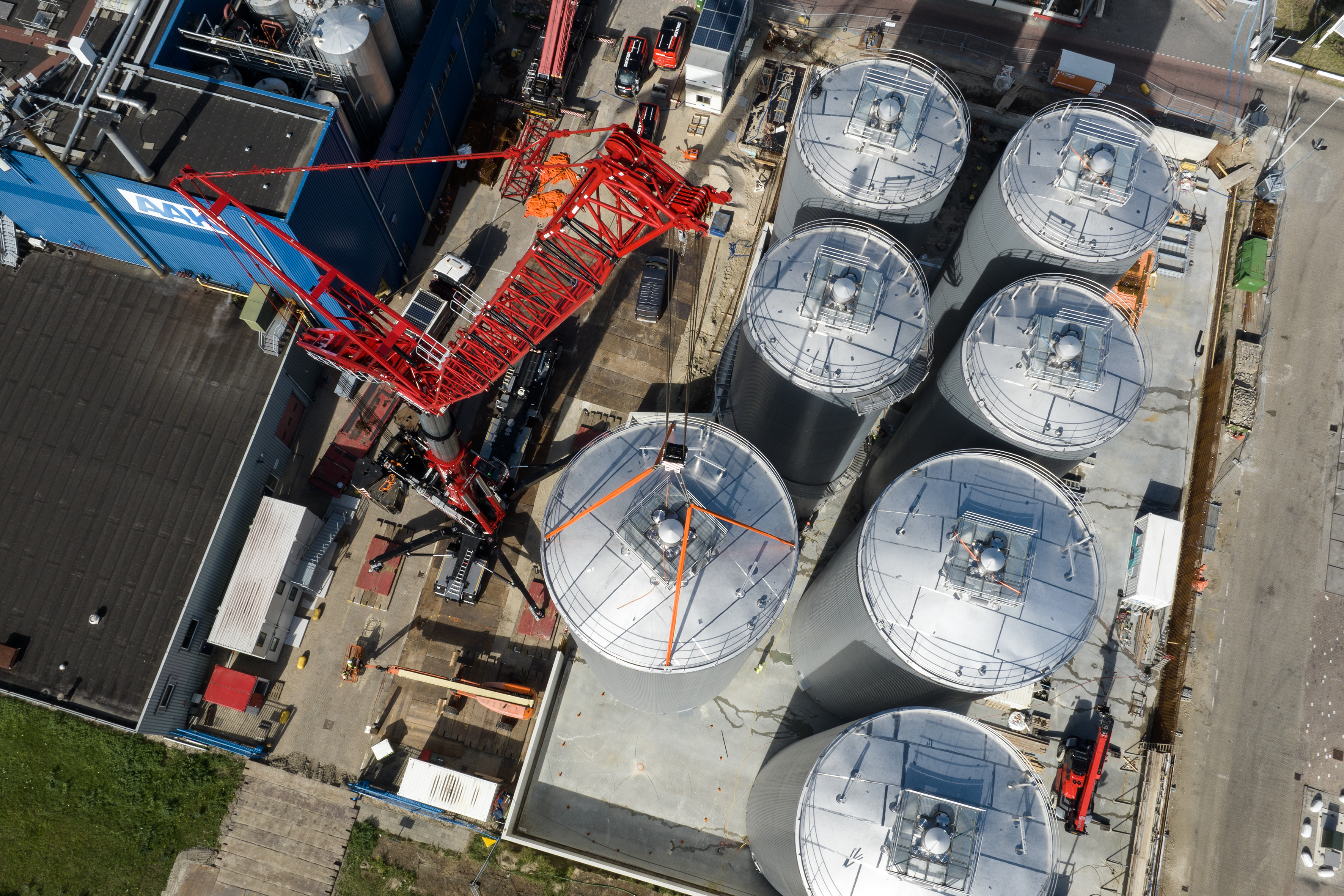A warehouse on fire, a broken pump or leakage at the terminal. As an operator, how do you prepare for this without actually experiencing it? The answer: virtual reality (VR).
“Koole has shown gumption and is the first in the market to start and invest in this,” says Juriaan Steenland, COO at Koole Terminals. The development of a VR training application started a year ago. It has been specially tailored for Koole to improve safety awareness and reporting of incidents within the company. It will initially be used mainly to train operators in the company. By simulating unsafe situations, operators can practice endlessly and build experience. Should an unsafe situation actually occur, they will be trained and experienced enough to act and report appropriately.
Jur Steenland: “The quality improvement you can make now with simulation is many times greater and better than before without VR.”

Seeing instead of looking
Geeske Steeneken, as Learning and Development Lead at Koole Terminals, has been closely involved in the development of the VR application and has ensured that it is rolled out within a year: “Through 360 degree photography, we have been able to virtually replicate our terminals. This allows us to put operators in a visual setting exactly like our terminals and mimic what can actually happen. It makes it realistic for our colleagues and provides recognition if it ever happens in real life.” Think of incidents like a leaking pump that starts making increasingly loud noises, spotting a truck speeding or a driver not wearing a seat belt. Timely recognition, reporting, correct assessment and correct action are of great importance. Steenland adds, “Watching situations with the VR glasses requires a different way of noticing. We teach operators to see instead of just look.”

Continuous learning
When asked why VR is especially appropriate for a company like Koole, Steenland replies, “We are a learning organization and want to train our people both horizontally and vertically. This is also important to see for new employees. We take safety very seriously. We explore the boundaries of learning development and do not settle for mediocrity.” The initial findings of the VR training application are positive: the number of incidents is decreasing and employees at the terminal feel empowered by performing the actions themselves during training.
Geeske Steeneken is proud: “You see them change, gain more confidence. This also changes the dynamics between colleagues, resulting in better cooperation.” Ultimately, Koole expects using VR to lower the barrier to learning new skills.
What the future holds
Koole Terminals has made great strides recently. The company is growing rapidly and this (technological) step fits in well with this. A safety training tool has been on the wish list for some time. Steeneken: “The momentum is there, the technology is ready and so is this generation of colleagues.” Steenland adds, ” The energy transition and working more cost-efficiently also play a distinct role in this.” The application is now being used to train operators at all Koole Terminals locations in the Netherlands. It is planned to be rolled out internationally in 2024. The VR tool will then be multilingual and will also be made available for other job roles. “The possibilities are really endless and don’t just center on safety,” explains Steenland. One wish for the future would be to enable following work instructions via VR as well. In addition, Koole wants to fine-tune the training for each terminal. “Not every terminal deals with the same types of incidents, we also want to incorporate this and adjust per location and per team,” says Steeneken.
